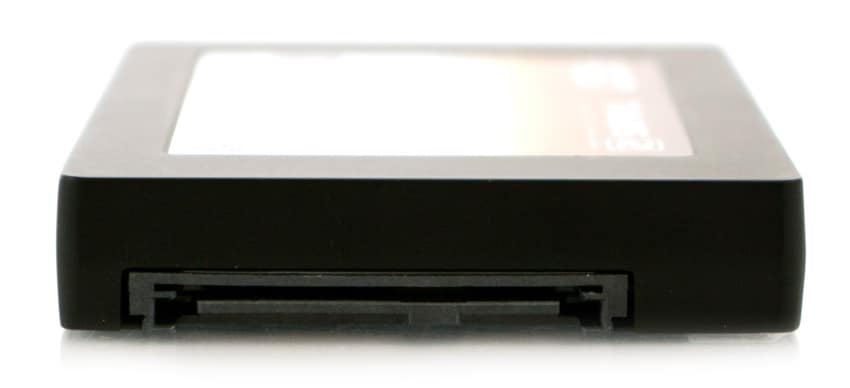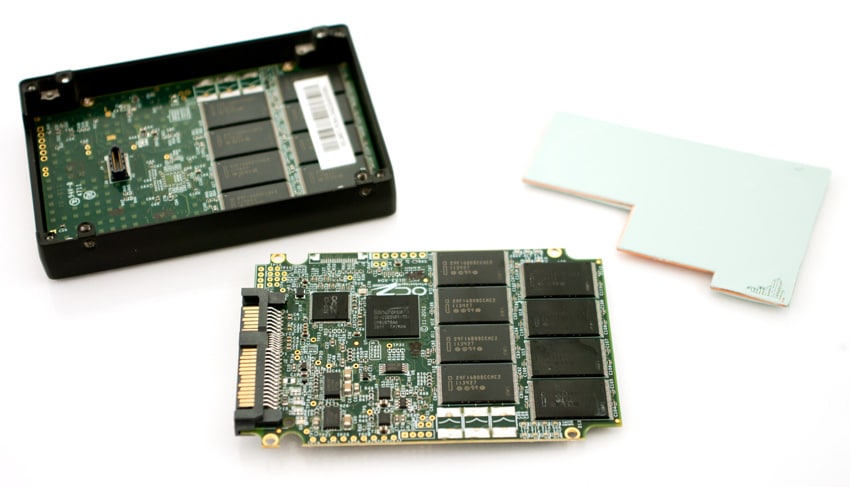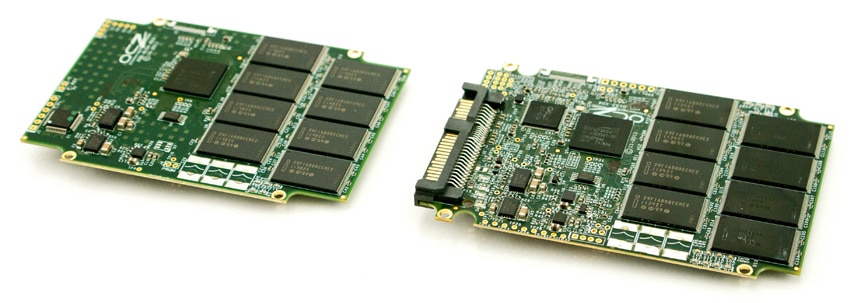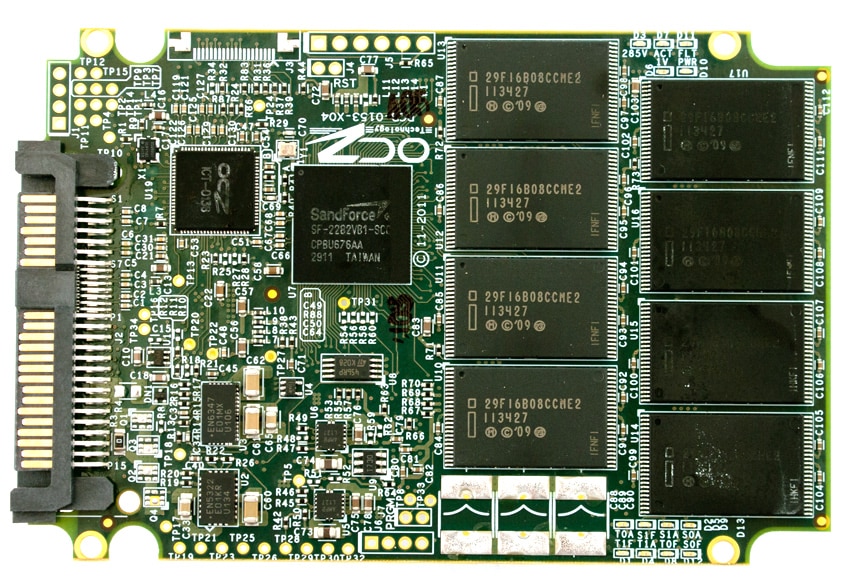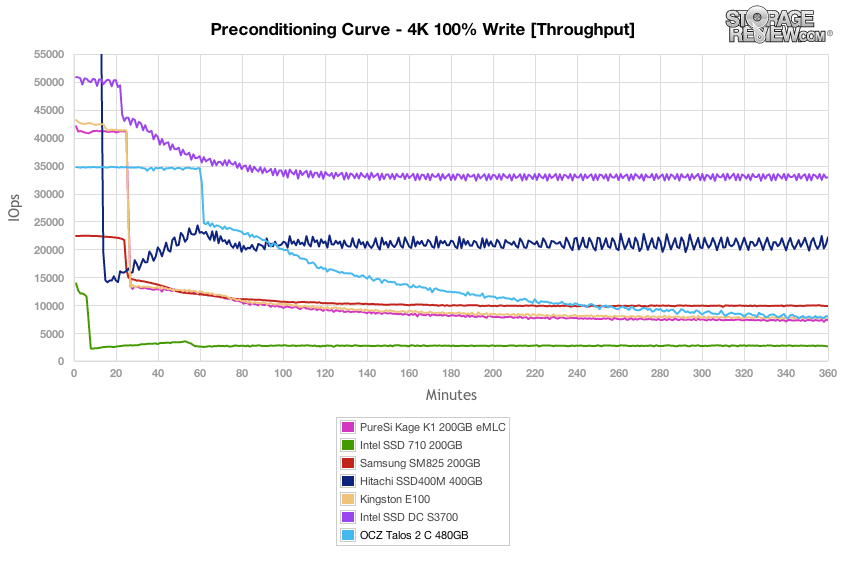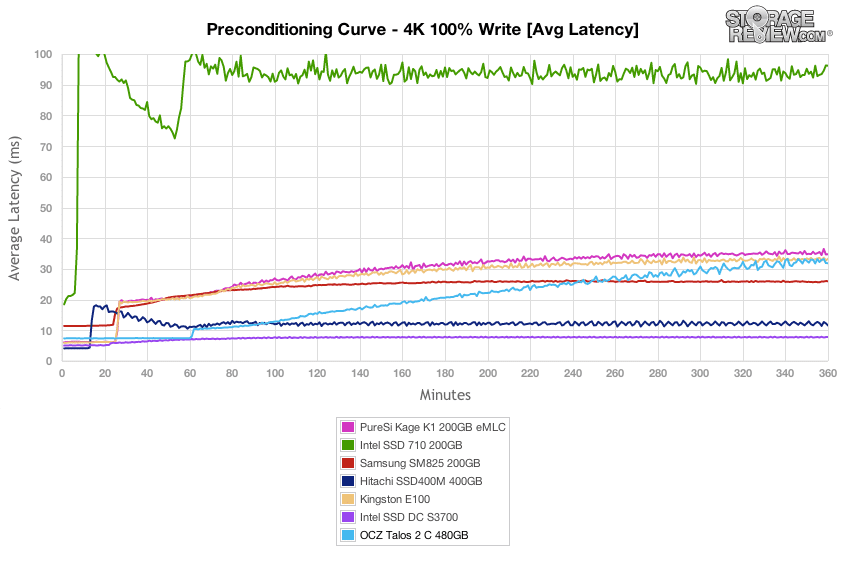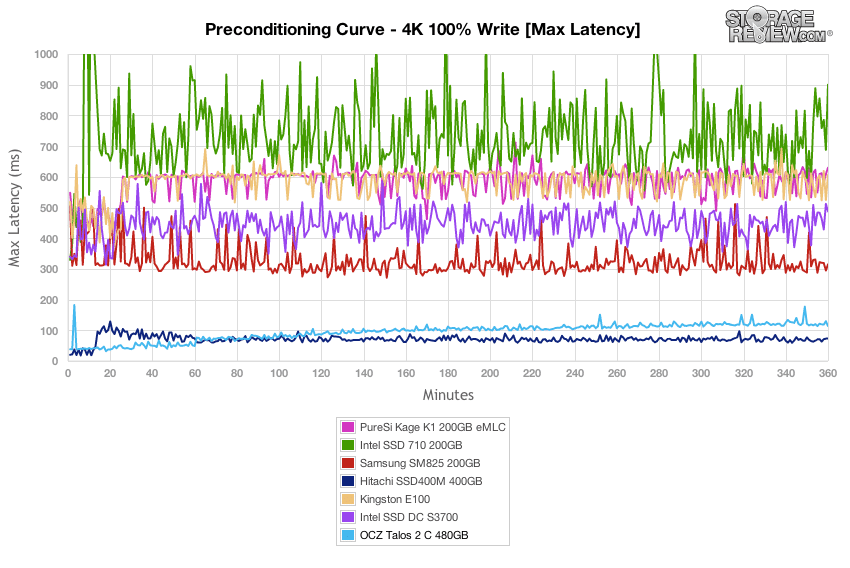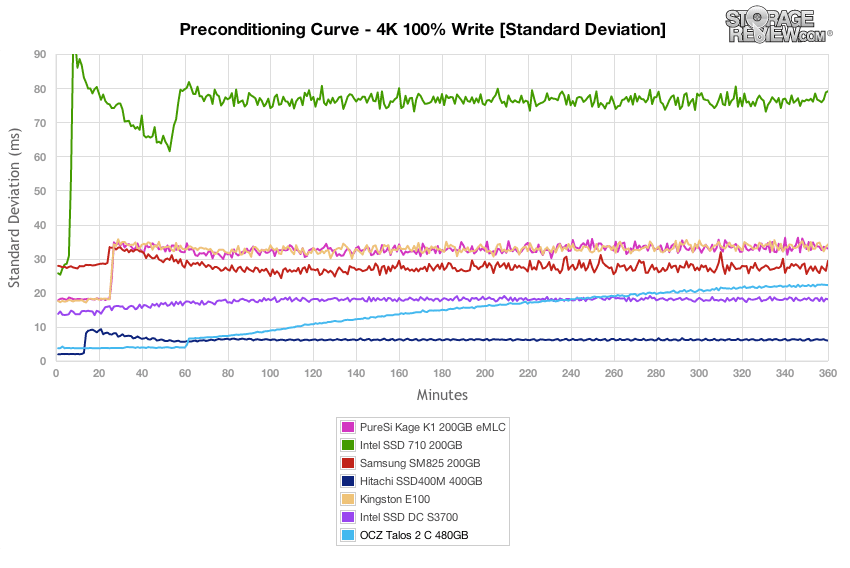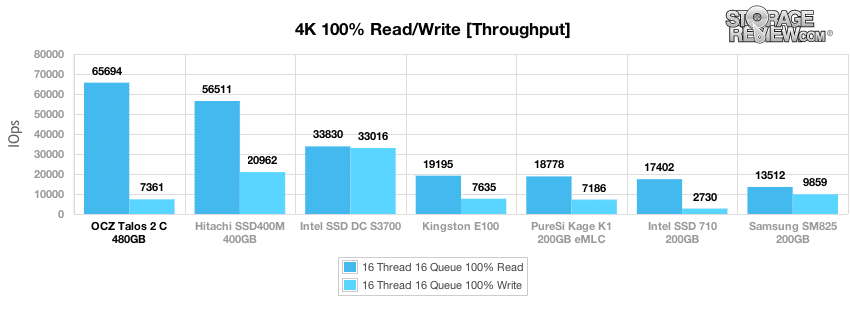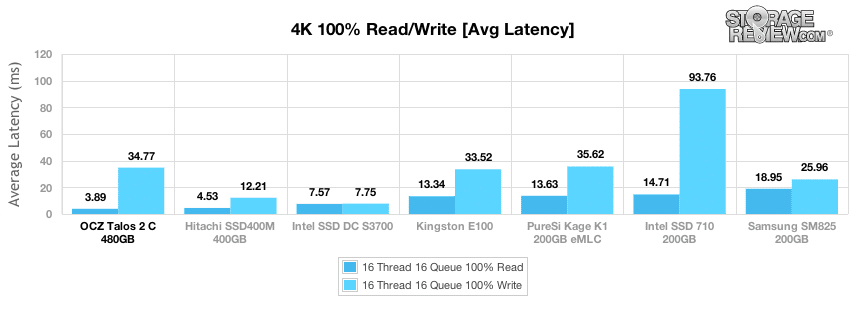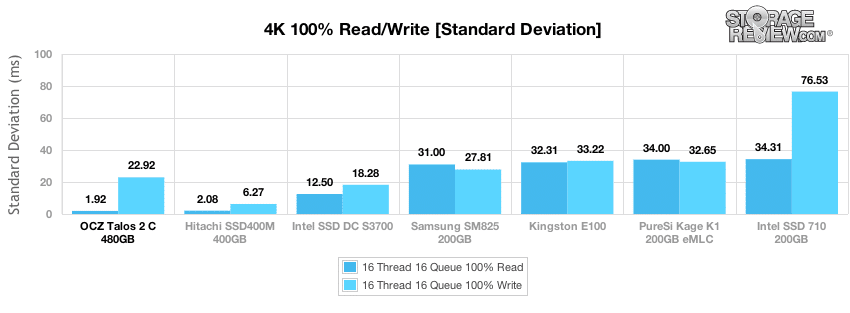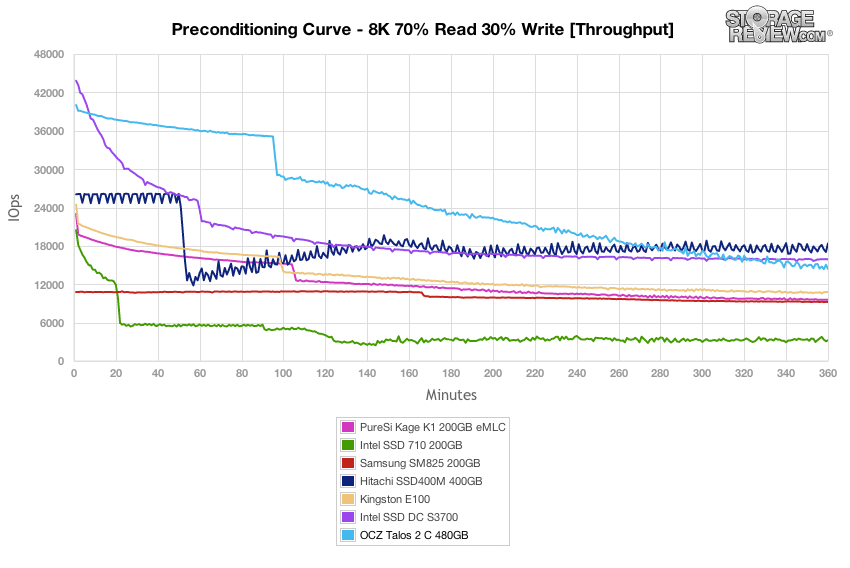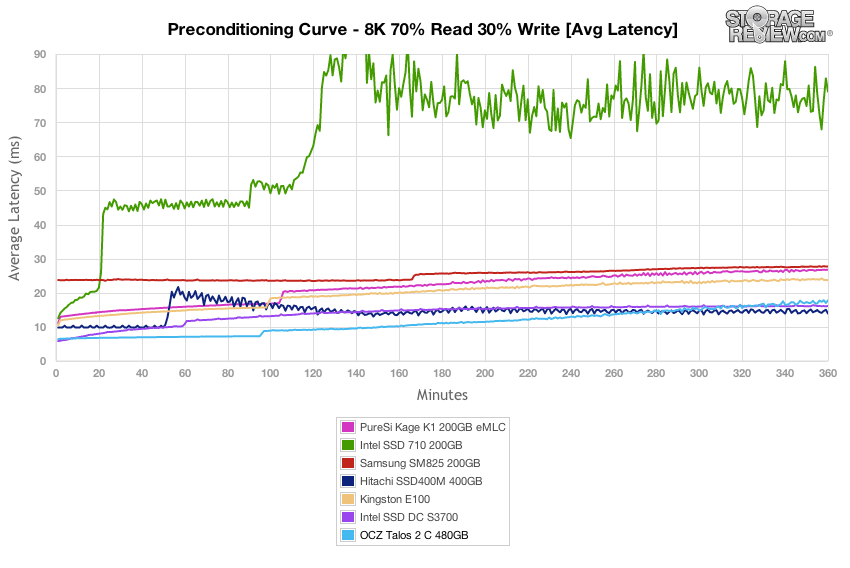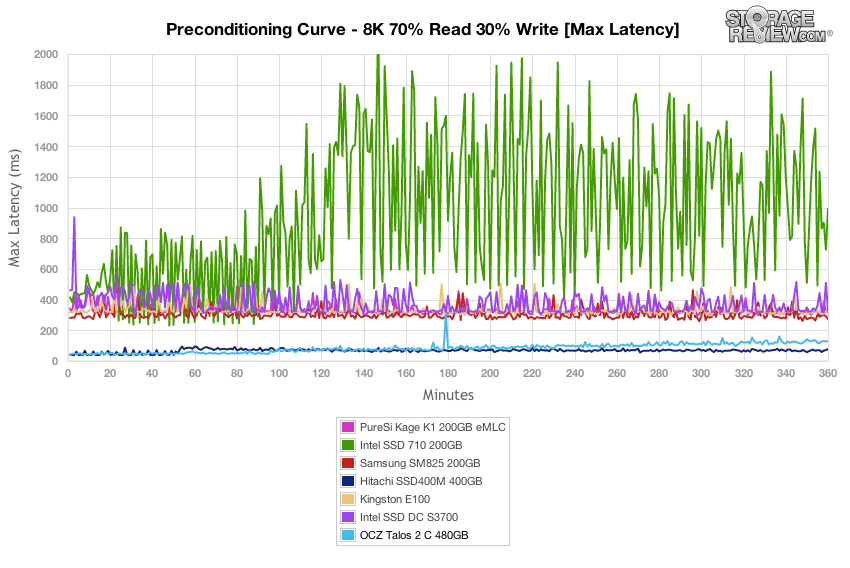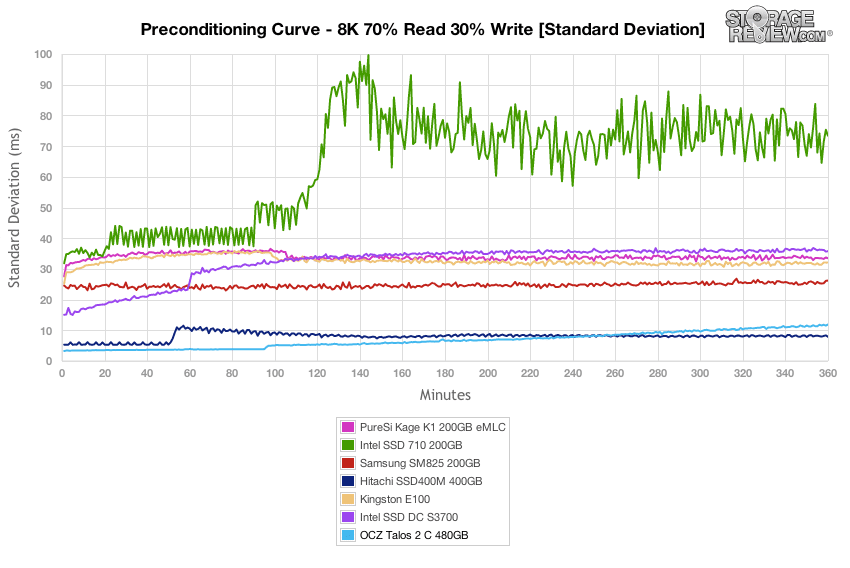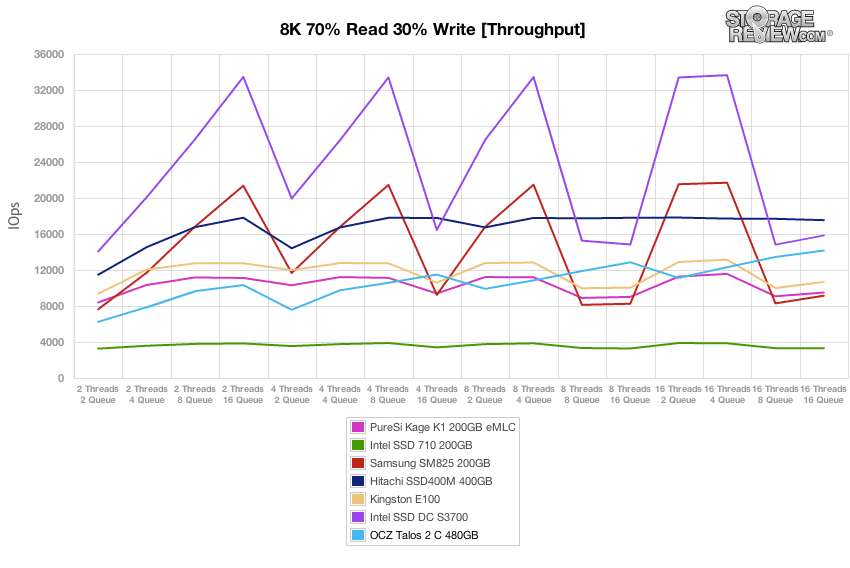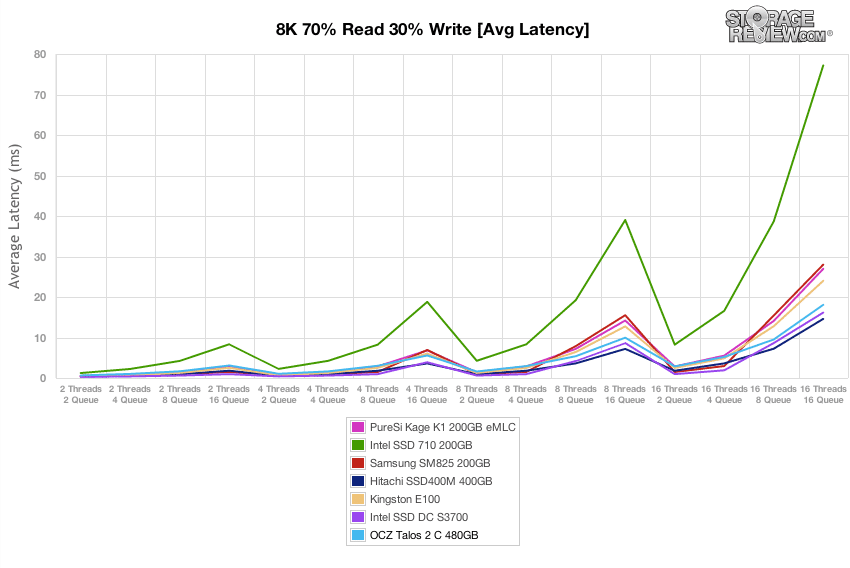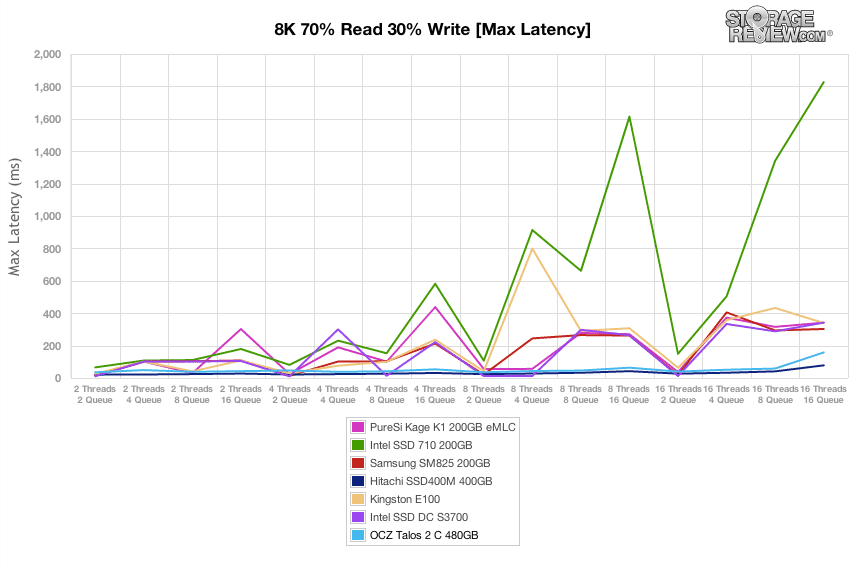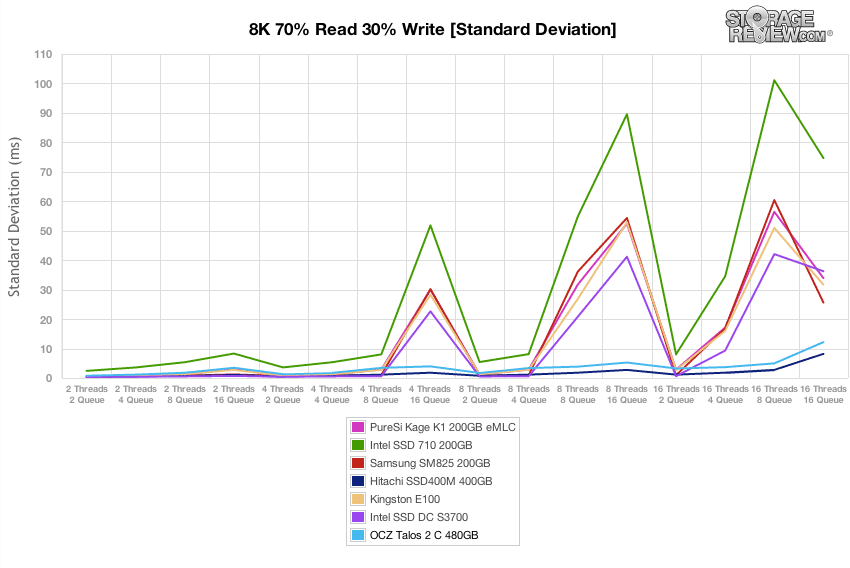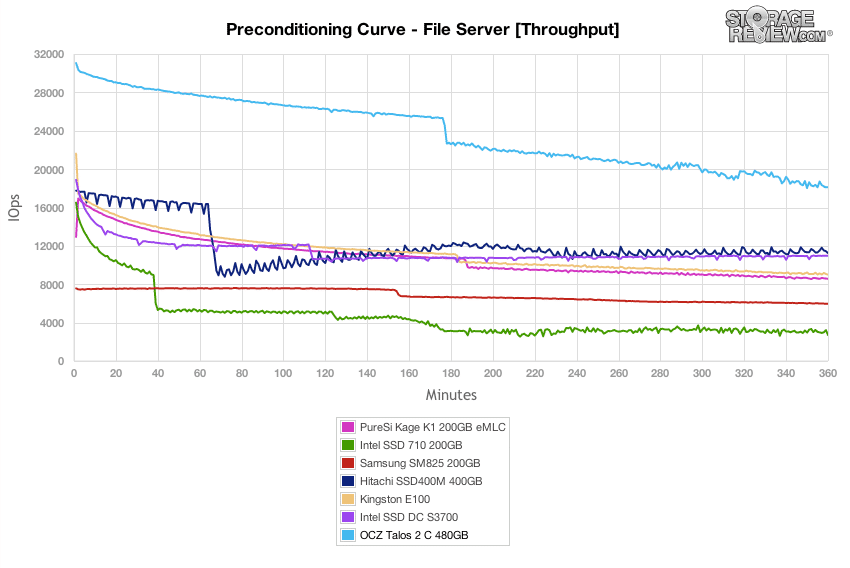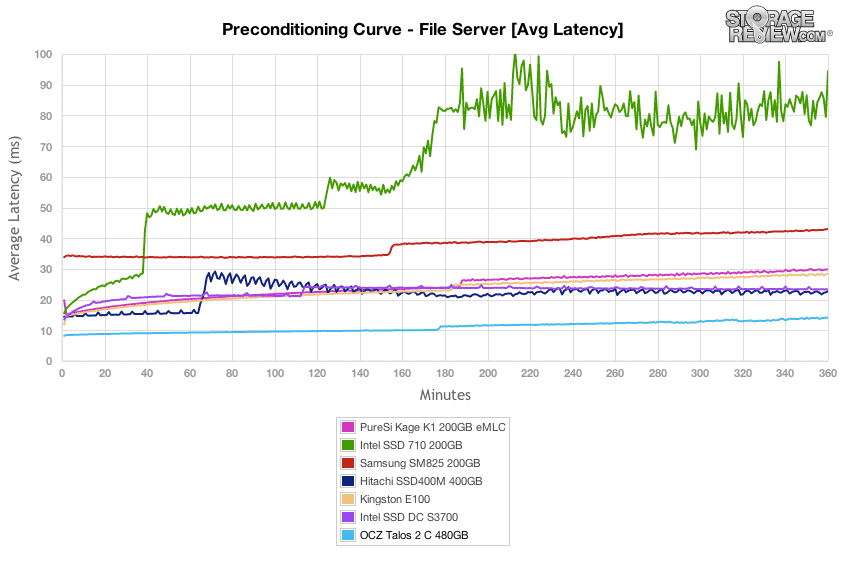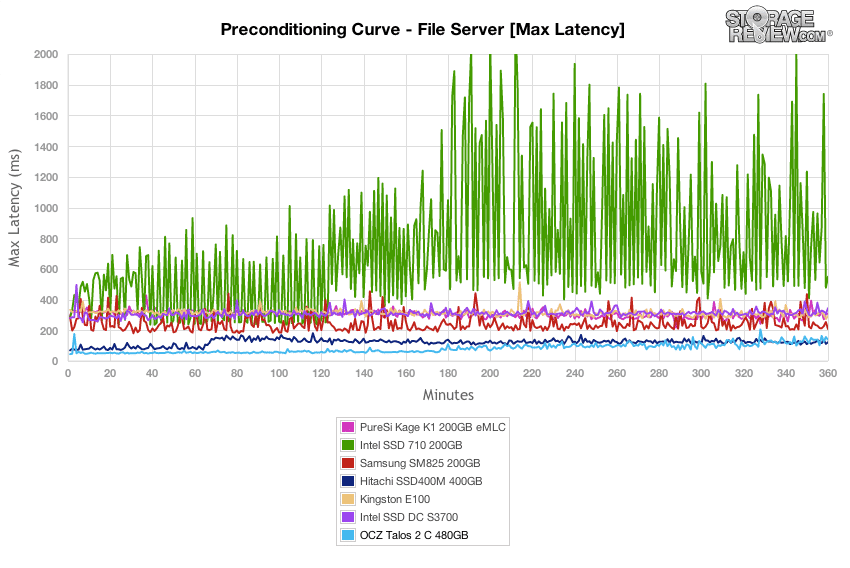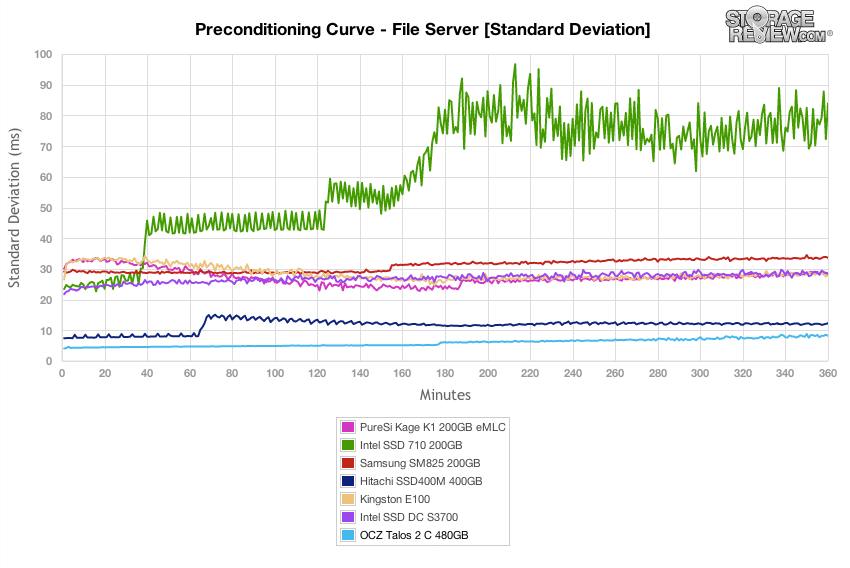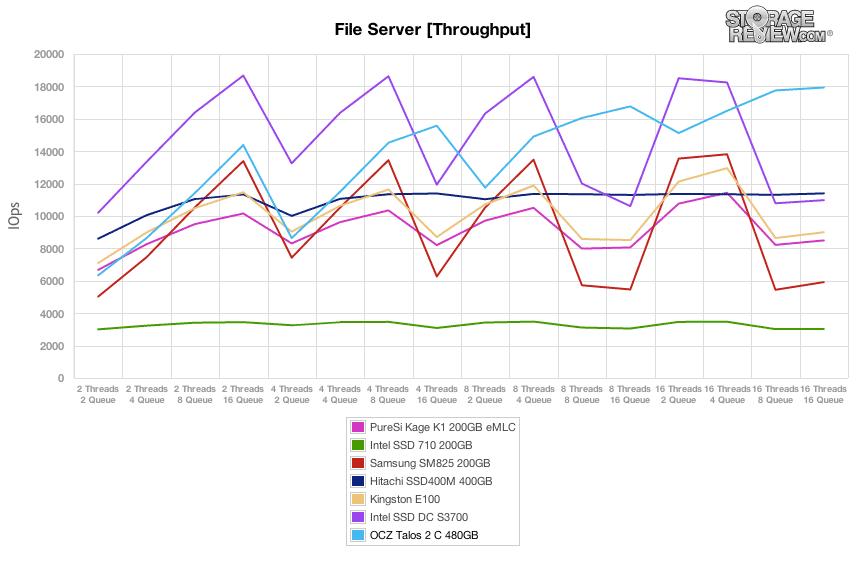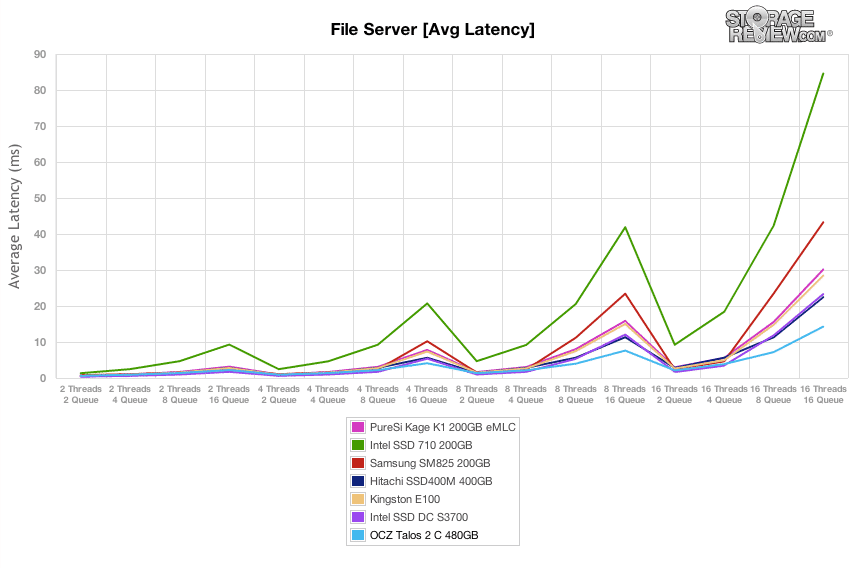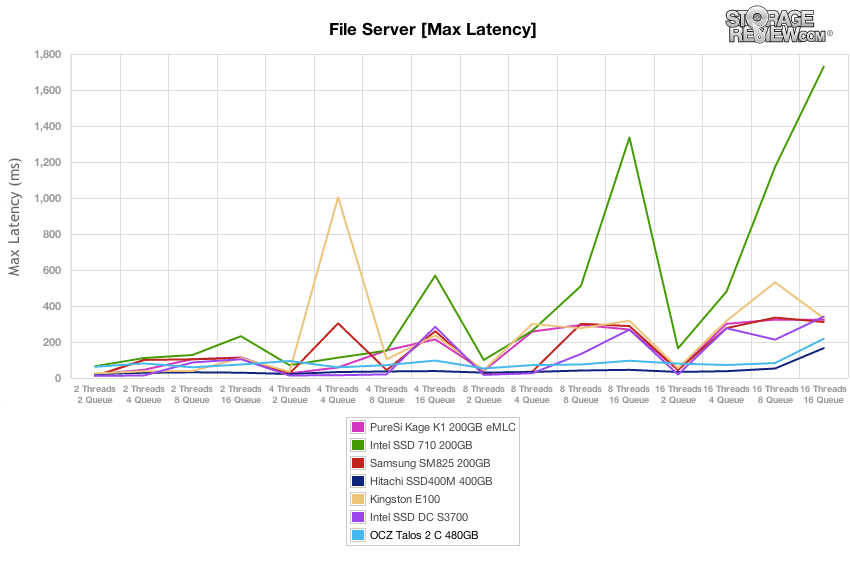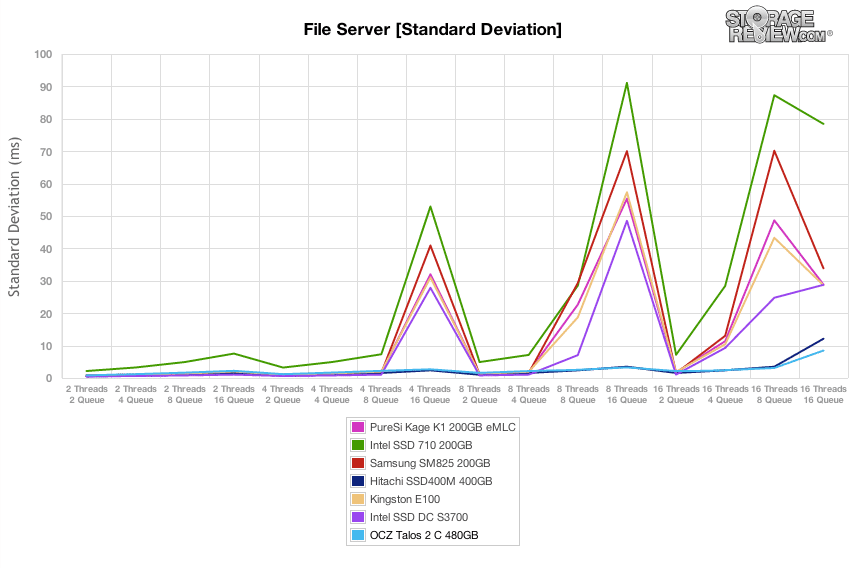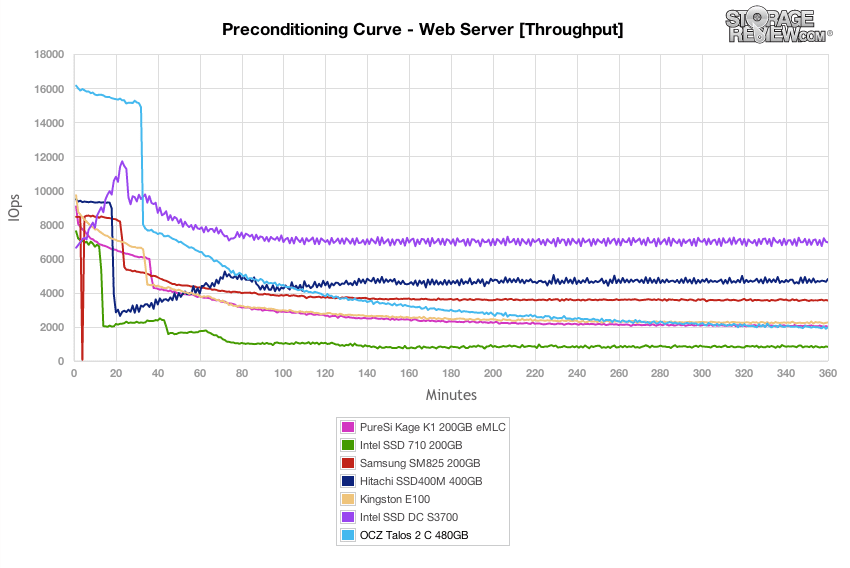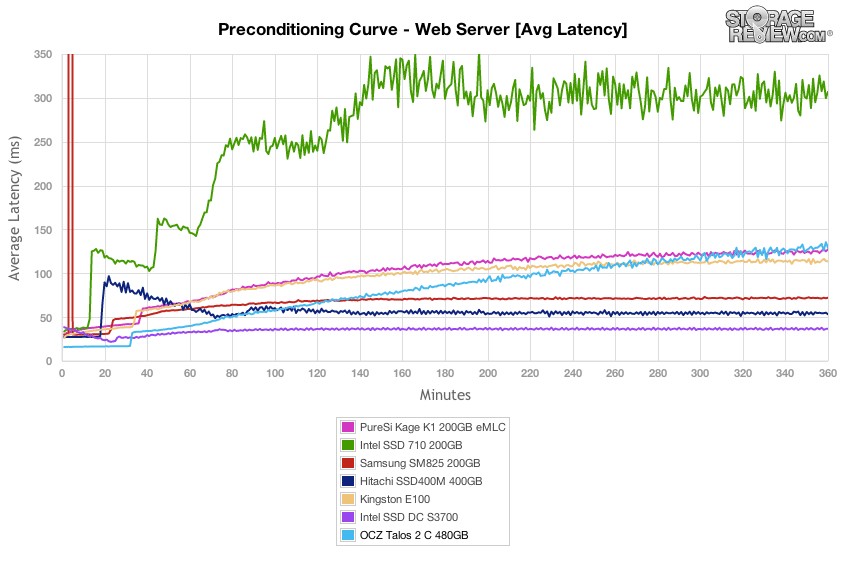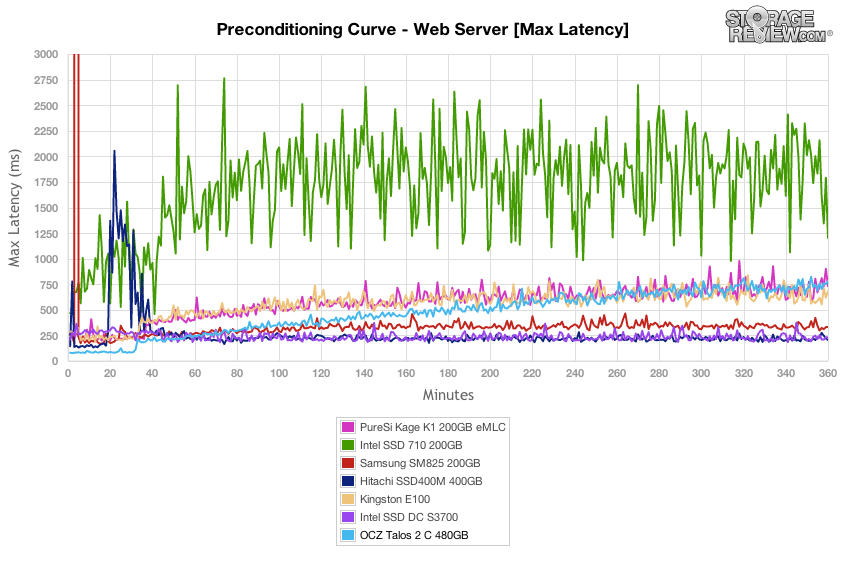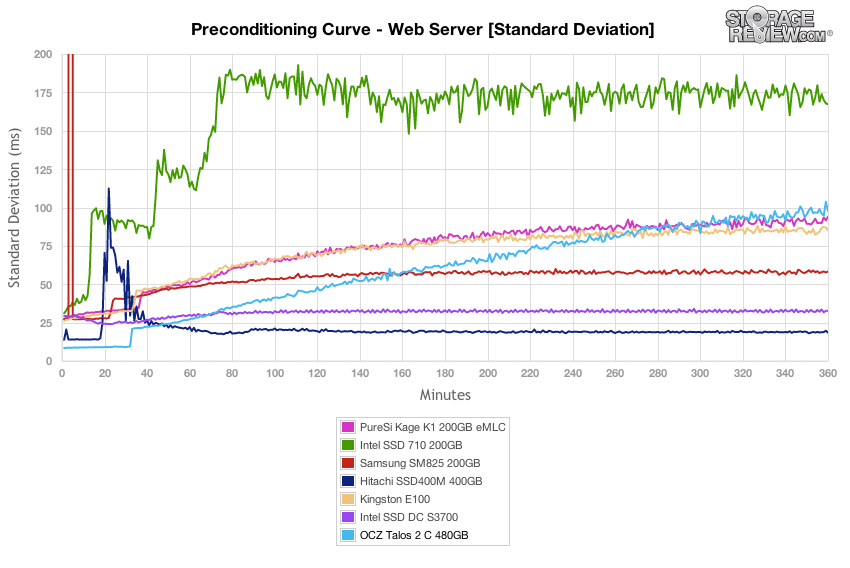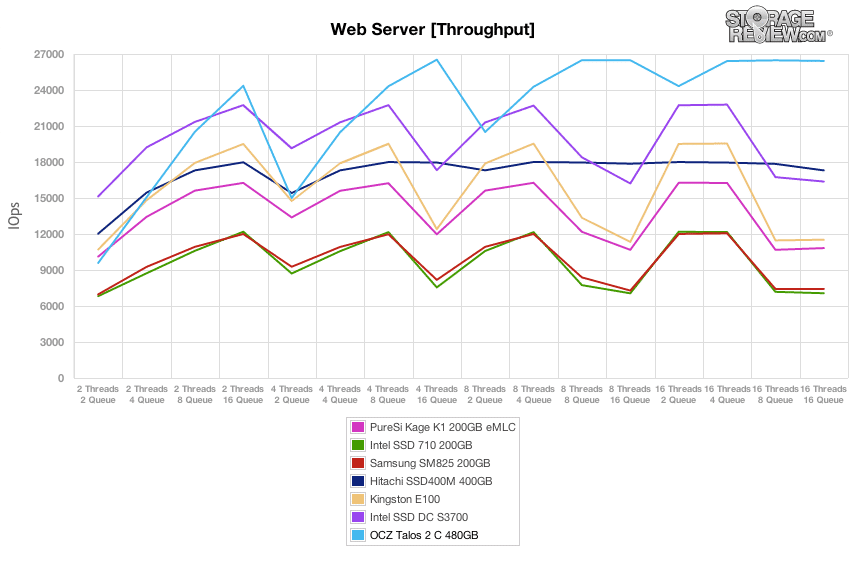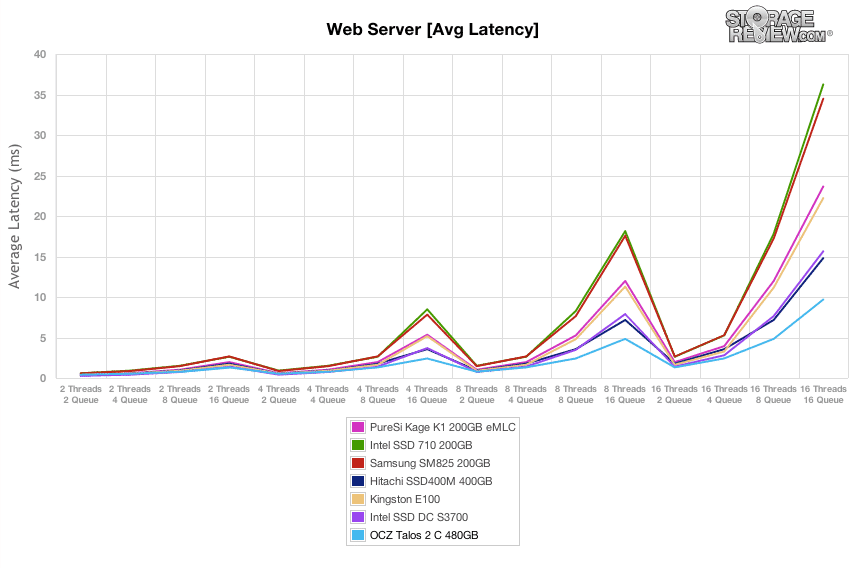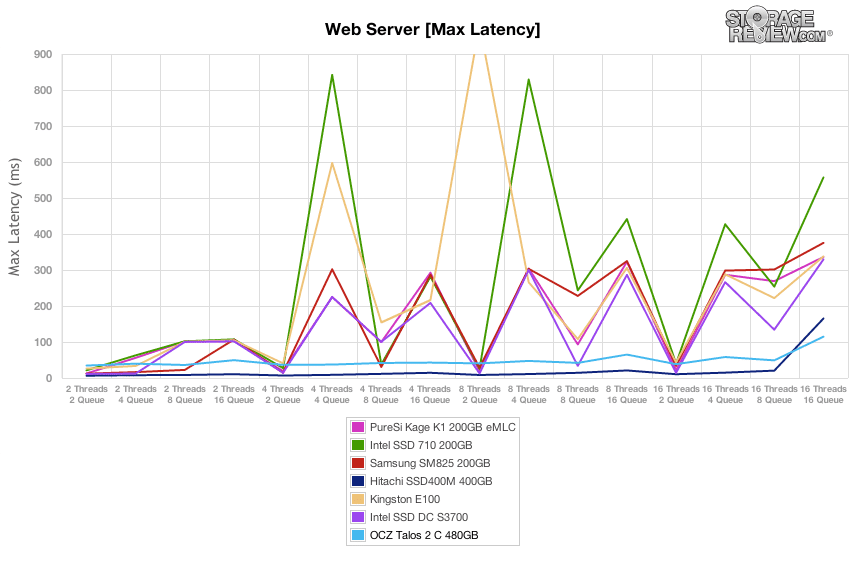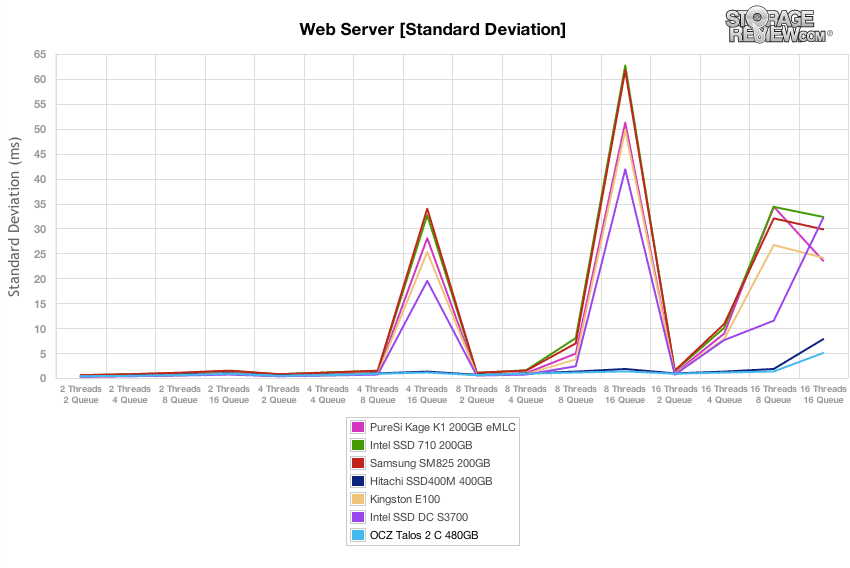
The OCZ Talos 2 is an enterprise SSD that uses a SAS interface, MLC NAND and 2.5″ form factor. The Talos 2 comes in two variations, an R model that includes powerfail protection and more over provisioning and a C model that does not, giving enterprises flexibility based on their needs. Architecturally, the Talos 2 is somewhat unique in the marketplace in that it uses dual controllers in a 2.5″ form factor. OCZ leverages their Virtualized Controller Architecture (VCA) 2.0 to tie together a pair of SandForce flash controllers, which provides both performance and capacity benefits.
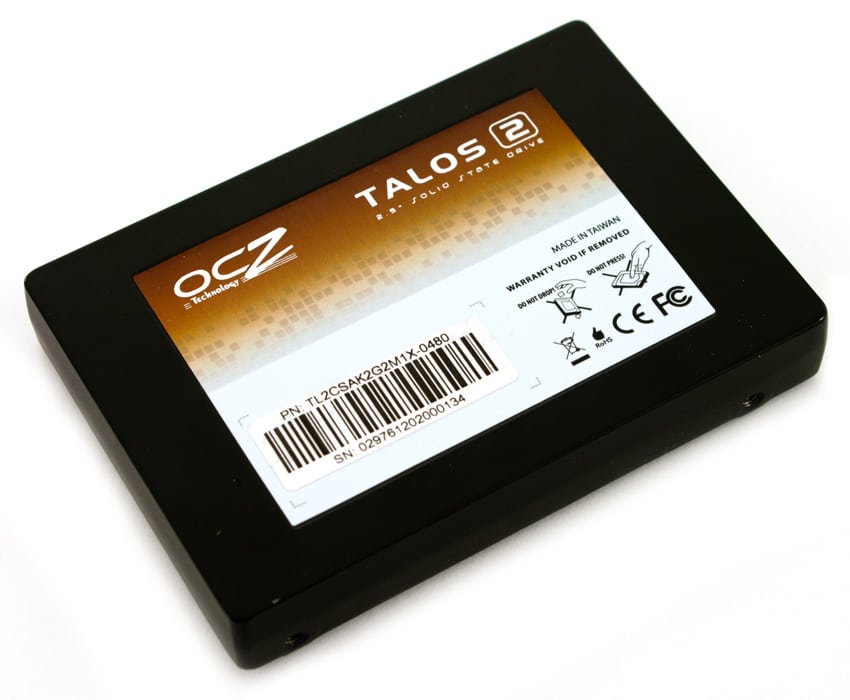
When breaking down performance, OCZ pitches the Talos 2 as the overall enterprise workhorse, which is a pretty common refrain for SAS-based SSDs. Where SATA drives maintain some pricing and form factor advantages, the SAS interface can offer higher performance in wide-port modes, and being dual-ported provides the drives inherent HA access that SATA can’t offer. For its part, the Talos 2 boasts pretty impressive mixed-workload (75/25 read/write) performance quotes of 54,000 IOPS 4K Random and 42,000 IOPS 8K Random.
With MLC NAND can sometimes come compromises when it comes to endurance. The Talos 2 C supports one full drive write per day over the course of its three year warranty. Both figures are below the competition in this space, but some of that has to due with drive configuration. The Talos 2 C uses 7% over provisioning where competing drives, or the Talos 2 R, with higher DWPD support can use 28% or more. In the end it’s a balancing game of price, performance and endurance and the Talos 2 C does bring a unique combination to market.
The Talos 2 C-Series comes in 240GB, 480GB and 960GB capacities, the R-Series comes in 200GB, 400GB and 800GB, both families use MLC NAND, though OCZ does custom orders should a customer prefer eMLC or SLC NAND.
OCZ Talos 2 Specifications
- Capacities (C-Series)
- 240GB (L2CSAK2G2M1X-0240)
- 480GB (L2CSAK2G2M1X-0480)
- 960GB (L2CSAK2G2M1X-0960)
- Read Bandwidth up to 550 MB/s
- Write Bandwidth up to 375 MB/s
- Random Operations (4kB) 70,000 IOPS (read); 35,000 IOPS (write)
- Mixed Workload (75% R; 25% W) 54,000 IOPS (4kB random); 42,000 IOPS (8kB random)
- Synchronous Mode Multi-Level Cell (MLC) NAND
- Interface Dual-Port SAS 6.0 Gbit/s (Full Duplex/Active-Active)
- Form Factor 2.5 inch
- Dimensions (L x W x H) 100.0 x 69.85 x 14.5 mm
- Weight 155g (may vary slightly due to capacity)
- Power Consumption Idle: 5.1 Watts; Active: 7.4 Watts
- Operating Temperature 0°C ~ 55°C
- MTBF 1 million hours
- Data Fail Recovery Recovers data from up to one NAND flash block per NAND controller
- Data Path Protection ECC: Up to 55 bits correctable per 512-byte sector; Data path parity protection
- Data Reliability Read Unrecoverable Bit Error Rate (UBER): 1016
- Data Encryption 128-bit AES-compliant
- Product Health Monitoring Self-Monitoring, Analysis and Reporting Technology (SMART) Support
- Operating Systems Windows XP 32/64-bit; Windows Vista 32/64-bit; Windows 7 32/64-bit; Windows Server 2008 R2; Linux
Design and Build
The Talos 2 uses a standard height 2.5″ form factor, which is new from the original 3.5″ Talos. It offers a 14.5mm z-height, which is common in the SAS market segment, which tops at 15mm for 2.5-inch enterprise drives. While some SSDs we have reviewed don’t quite use the full amount of internal space, the OCZ Talos 2 requires most of it with the internal components of two SSDs.
After opening up the OCZ Talos 2 C SSD, we find a heat spreader on the top that dissipates heat from the top SandForce SF-2282 controller as well as the OCZ VCA that bridges both SandForce controllers and presents them on the SAS interface. In the 2.5″ enterprise SSD space, a dual controller configuration is very unique.
With both circuit boards outside of the case, you can see both SandForce SF-2282 controllers, which are linked together through a single connection bridging both circuit boards together. With each individual SSD combined, the Talos 2 C offers a 480GB capacity split up among 32 16GB NAND pieces.
Looking at the primary SSD inside the OCZ Talos 2 C SSD, we see the SandForce SF-2282 controller, the OCZ VCA, and Intel 25nm 29F16B08CCME2 MLC NAND pieces. Unlike the Talos 2 R, the Talos 2 C doesn’t offer power-fail protection, which would include capacitors soldered onto the unused pads seen below.
Testing Background and Comparables
The OCZ Talos 2 C uses two SandForce SF-2282 controllers and Intel MLC NAND with a SAS 6.0Gb/s interface.
Comparables for this review:
- Intel SSD 710 (200GB, Intel PC29AS21BA0 controller, Intel 25nm eMLC NAND, 3.0Gb/s SATA)
- Intel SSD DC S3700 (200GB, Intel PC29AS21CA0 controller, Intel 25nm HET MLC NAND, 6.0Gb/s SATA)
- Samsung SM825 (200GB, Samsung S3C29MAX01-Y330 controller, Samsung 30nm eMLC NAND, 3.0Gb/s SATA)
- Hitachi SSD400M (400GB, Intel EW29AA31AA1 controller, Intel 25nm eMLC NAND, 6.0Gb/s SAS)
- PureSi Kage S1 (200GB, SandForce SF-2500 controller, Toshiba 24nm eMLC NAND, 6.0Gb/s SATA)
- Kingston SSDNow E100 (200GB, SandForce SF-2500 controller, Toshiba 24nm eMLC NAND, 6.0Gb/s SATA)
All enterprise SSDs are benchmarked on our enterprise testing platform based on a Lenovo ThinkServer RD240. The ThinkServer RD240 is configured with:
- 2 x Intel Xeon X5650 (2.66GHz, 12MB Cache)
- Windows Server 2008 Standard Edition R2 SP1 64-Bit and CentOS 6.2 64-Bit
- Intel 5500+ ICH10R Chipset
- Memory – 8GB (2 x 4GB) 1333Mhz DDR3 Registered RDIMMs
- LSI 9211 SAS/SATA 6.0Gb/s HBA
Enterprise Synthetic Workload Analysis
Flash performance varies throughout the preconditioning phase of each storage device. Our enterprise storage benchmark process begins with an analysis of the way the drive performs during a thorough preconditioning phase. Each of the comparable drives are secure erased using the vendor’s tools, preconditioned into steady-state with the same workload the device will be tested with under a heavy load of 16 threads with an outstanding queue of 16 per thread, and then tested in set intervals in multiple thread/queue depth profiles to show performance under light and heavy usage.
Preconditioning and Primary Steady-State Tests:
- Throughput (Read+Write IOPS Aggregate)
- Average Latency (Read+Write Latency Averaged Together)
- Max Latency (Peak Read or Write Latency)
- Latency Standard Deviation (Read+Write Standard Deviation Averaged Together)
Our Enterprise Synthetic Workload Analysis includes four profiles based on real-world tasks. These profiles have been developed to make it easier to compare to our past benchmarks as well as widely-published values such as max 4K read and write speed and 8K 70/30, which is commonly used for enterprise drives. We also included two legacy mixed workloads, the traditional File Server and Webserver, each offering a wide mix of transfer sizes.
- 4K
- 100% Read or 100% Write
- 100% 4K
- 8K 70/30
- 70% Read, 30% Write
- 100% 8K
- File Server
- 80% Read, 20% Write
- 10% 512b, 5% 1k, 5% 2k, 60% 4k, 2% 8k, 4% 16k, 4% 32k, 10% 64k
- Webserver
- 100% Read
- 22% 512b, 15% 1k, 8% 2k, 23% 4k, 15% 8k, 2% 16k, 6% 32k, 7% 64k, 1% 128k, 1% 512k
In our first workload with consisting of 100% 4K random write activity in full saturation, we measured around 35,000 IOPS burst from the OCz Talos 2 C before taping off to around 7,500 IOPS. This fell off to the lower half of the comparable SSDs, which isn’t too bad considering the consumer MLC to eMLC or HET MLC NAND differences with the smaller amounts of over-provisioning.
At burst speeds average latency started off around 8ms which progressed upwards to over 30ms as it neared steady-state with an effective queue depth of 256.
Comparing max latency, the OCZ Talos 2 C started with a max latency range of slightly below 100ms which increased to slightly above 100ms over the duration of the test.
Standard deviation of the OCZ Talos 2 C started very low, and slightly crept up over the duration of the test to near where some of the other SandForce-powered enterprise SSDs leveled off.
With its dual controllers inside, the OCZ Talos 2 C offered the highest 4K random read speed of 65,694 IOPS, although with its small over-provisioning levels it measured just 7,361 IOPS 4K random write.
With a workload of 16T/16Q, the OCZ Talos 2 C offered an average 4K random read latency of 3.89ms, with a write latency of 34.77ms.
Max latency from the OCZ Talos 2 C was very low in testing, measuring the second lowest in this group with a peak read response time of 55.9ms and a peak write latency of 187ms.
Comparing latency consistency, the OCZ Talos 2 C offered the best 4K random read consistency, although its write latency fell into the middle of the pack.
In our next workload we look at an 8K profile with a 70/30 read/write mixed ratio. In this setting the OCZ Talos 2 C started off around 40,000 IOPS burst, and slowly tapered down to a speed around 15,000 IOPS.
Average latency of the OCZ Talos 2 C measured 6.3ms at the beginning of our 8K 70/30 preconditioning test, which increased to about 17.5ms as it neared steady-state.
Over the duration of our 8K 70/30 test, the SAS-based OCZ Talos 2 C offered peak response times, with latency max measuring below 130ms for the bulk of the test.
Latency consistency of the OCZ Talos 2 C measured closely in line with the Hitachi SSD400M over the duration of our 8K 70/30 test.
Compared to the fixed 16 thread, 16 queue max workload we performed in the 100% 4K write test, our mixed workload profiles scale the performance across a wide range of thread/queue combinations. In these tests we span workload intensity from 2 threads and 2 queue up to 16 threads and 16 queue. In the expanded 8K 70/30 test, the OCZ Talos 2 C peaked at 14,158 IOPS with a workload of 16T/16Q and stayed towards the lower middle of the pack.
Average latency also ranked towards the middle of the pack, with the faster drives such as the Samsung SM825, Intel SSD DC S3700, and Hitachi SSD400M edging it out.
Over the duration of our varying load 8K 70/30 test, max latency stayed very low from the OCZ Talos 2 C, with the peak staying under 63ms for the bulk of the test, before edging up to 157ms with the highest 16T/16Q load.
Standard deviation from the OCZ Talos 2 C in our test environment was also very good, coming in right behind the Hitachi SSD400M.
The next workload is our File Server profile, which covers a wide range of transfer sizes spanning from 512b to 512K. With a heavy 16T/16Q saturation load, the dual-controller OCZ Talos 2 C offered the highest peak and steady-state performance by far.
Average latency in the preconditioning section of our File Server test measured around 8.4ms during burst speeds and slowly increased to about 14ms over the duration of the test.
For a large part of the test, the OCZ Talos 2 C offered the lowest max latency in our File Server preconditioning section, measuring under 100ms during burst conditions and then staying under 200ms as it neared steady-state.
In terms of latency consistency, the OCZ Talos 2 C offered the best performance in our File Server test, coming in ahead of the Hitachi SSD400M.
After each drive completed the preconditioning stage, we dropped into a varying workload where we scaled the thread and queue count from 2T/2Q up to 16T/16Q. The OCZ Talos 2 C showed both the strength and weakness of its dual-controller design in the File Server workload. At lower effective queue depths the twin controller platform started at the lower-middle of the group, needing increasingly higher effective queue depths to perform well. As the loads increased though, the dual-controllers took it in stride, offering the highest performance at the 16T/16Q load.
As the OCZ Talos 2 C offered average latency ranking middle of the pack in early segments of the test to the quickest of the group at the higher loads.
The max latency of the OCZ Talos 2 C in our File Server test stayed below 100ms for all loads below 16T/16Q, and then increased to 218ms for the highest load.
Standard deviation of the OCZ Talos 2 C was very consistent, staying roughly on par with the Hitachi SSD400M, with the edge given to the Talos 2 at the highest 16T/16Q load.
Our final preconditioning workload takes the traditional 100% read activity Web Server test and flips it to 100% write to precondition each SSD. This is our most aggressive workload, although it doesn’t really match any real-world conditions with 100% write. In this section the Talos 2 C started with the highest burst workload of roughly 16,000 IOPS, before tapering off to about 2,000 IOPS (alongside the other SandForce enterprise models) as it neared steady-state.
The twin-controller design of the OCZ Talos 2 proved useful in this heavy Web Server preconditioning load, starting with the lowest response time in the pack. With its weaker over-provisioning levels though, response times slipped to the bottom of the pack (but still far exceeding the Intel SSD 710).
The OCZ Talos 2 had a huge lead in max latency at the start of the test, but as it neared steady-state fell in line with the other SandForce-powered SSDs.
Similar with the max latency performance, the OCZ Talos 2 started with a great standard deviation, but slipped towards the back of the pack as it neared steady-state.
After each SSD finished our preconditioning stage in the Web Server test, we flipped the workload back to 100% read. In read-only conditions, the strength of the dual-controller designed came out, with the OCZ Talos 2 offering a huge lead in throughput in all but the lowest thread/queue loads. At its peak it offered transfer speeds measuring 26,400 IOPS, compared to 16,300 of the closest competitor at the highest effective queue depths.
Average response times from the OCZ Talos 2 C were great once it picked up steam past an effective queue depth of 16. At higher workloads it quickly surpassed the performance of others in the same group.
Comparing max latency, the OCZ Talos 2 C came in second to the Hitachi SSD400M, with response times measuring 40-60ms over the bulk of the test, before peaking at 114ms at the 16T/16Q load.
In terms of latency consistency in our read-only Web Server workload, the OCZ Talos 2 C offered a small lead in front of the Hitachi SSD400M, coming in ahead of the pack.
Conclusion
The enterprise MLC SAS SSD space has become increasingly more crowded in the last year, filled by both newcomers and longstanding participants alike. Due to the shear number of drives in this category, it’s difficult to stand out from the crowd. OCZ’s take is interesting, twin SandForce controllers tied together with their VCA 2.0 hardware/software in a standard 2.5mm form factor. This gives OCZ more performance, along with the ability to hit capacities up to 960GB with a SandForce controller, something that can’t be done with this particular controller any other way.
Aside from novel architecture though, the Talos 2 C needs to stand out in key performance areas as well. OCZ touts the drive as the do-it-all generalist, which is the key aim for this class of drive. The Talos 2 C meets these expectations in many ways, showing superb Webserver and Fileserver performance as the load increases, the former illustrating the drive handling 100% read activity with multiple files sizes well, the latter showing very good mixed read/write performance.
The twin-controller design also shows strength by being able to better cope with higher effective queue depths. In our tests where it shined with highest peak performance; the Talos 2 has to play catch up and surpass to get by other SSDs that had better low-end performance netting them an early performance lead. For platforms requiring high performance at higher effective queue depths, the Talos 2 C shines in throughput and latency.
Buyers looking for even more performance might want to consider the Talos 2 R, which not only offers power-fail protection, but also come with higher over-provisioning levels that are more in line with competing enterprise models. The lower 7% over-provisioning level in the Talos 2 C is more geared towards read-intensive workloads, which it shined in, while it slumped in write-intensive tests. That same over-provisioning difference also comes into play when comparing endurance figures, which for the Talos 2 C, OCZ only rates it for 1 DWPD. Overall the OCZ Talos 2 offers a unique competitive advantage over other SandForce-based solutions on the market by doubling down on the popular SF-2282 controller, paired with OCZ’s VCA 2.0 architecture.
Pros
- Class-leading Web Server and File Server performance at high loads
- Very good burst performance from dual-controller design
- Low max latency and standard deviation in most workloads
Cons
- Endurance and warranty is lacking compared to other drives in this class
- Weaker low-end performance than other SSDs with a single controller
Bottom Line
The OCZ Talos 2 enterprise SSD offers an interesting dual-controller design in a standard 2.5″ SAS form factor. The drive is very effective in web server and file server use cases and shows category-leading latency and performance under higher effective queue depths.
Discuss This Review

